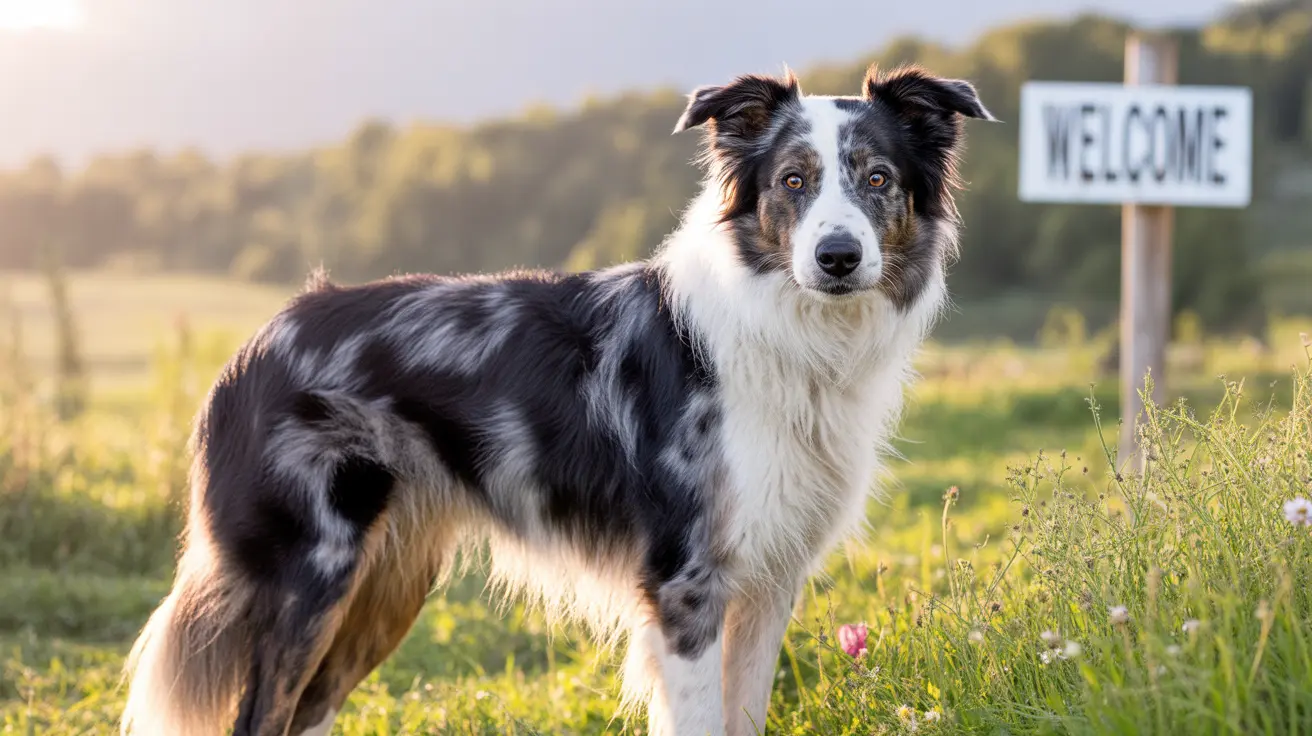Border Collies are renowned not just for their exceptional intelligence and herding abilities, but also for their stunning array of coat colors and patterns. From the classic black and white to rare and unique combinations, these beloved dogs showcase a remarkable diversity in their appearance. Let's explore the fascinating world of Border Collie colors and understand what makes each variation special.
Common Border Collie Color Patterns
The most recognizable Border Collie color combination is black and white, which is considered the breed's classic look. This pattern typically features a predominantly black coat with white markings on the chest, face, feet, and tail tip. However, this is just the beginning of the color spectrum for these versatile dogs.
Other common color patterns include:
- Red and white
- Chocolate and white
- Blue and white
- Tricolor (black/brown with tan and white)
Understanding Base Colors and Modifiers
Border Collie colors are determined by two main types of pigment: eumelanin (black/brown) and phaeomelanin (red/yellow). These base colors can be modified by various genetic factors to create different shades and patterns. The intensity and distribution of these pigments create the wide variety of colors we see in the breed.
Rare and Unique Color Variations
Some Border Collie colors are considered rare and highly sought after. The merle pattern, characterized by mottled patches of color, is one of the most striking variations. Blue merle Border Collies display a unique marbled pattern of black and gray, while red merle shows a similar pattern in brown tones.
Other rare colors include:
- Lilac (diluted chocolate)
- Slate (a unique gray variation)
- Australian red (ranging from light gold to deep red)
- Brindle (tiger-stripe pattern)
The Genetics Behind Color Patterns
Color inheritance in Border Collies is complex, involving multiple genes that interact to produce different colors and patterns. Key genetic factors include:
- The B locus (black vs. brown)
- The D locus (color dilution)
- The M locus (merle pattern)
- The S locus (white spotting)
Health Considerations and Color Genetics
While coat color is primarily an aesthetic feature, some color genetics can impact health. Double merle breeding (merle to merle) can result in serious health issues, including vision and hearing problems. Additionally, dogs with the dilute gene (responsible for blue and lilac colors) may be more prone to Color Dilution Alopecia.
Breed Standards and Show Considerations
While Border Collies come in many colors, not all variations are accepted in show rings. Most kennel clubs recognize traditional colors like black and white, brown and white, and blue merle. However, the breed's working ability has always been considered more important than coat color in its history and development.
Frequently Asked Questions
What are the most common and rare coat colors found in Border Collies?
The most common color is black and white, followed by red/chocolate and white. Rare colors include lilac, slate, and brindle patterns. Merle variations, while striking, are also less common.
How do the genetic loci like B, D, E, K, and M influence Border Collie coat colors and patterns?
These genetic loci work together to determine a dog's final coloration. The B locus controls black vs. brown pigment, D affects color dilution, E influences pigment distribution, K determines pattern type, and M creates the merle effect.
What health risks are associated with certain Border Collie colors like blue, lilac, or merle?
Double merle breeding can cause serious vision and hearing problems. Dogs with dilute colors (blue, lilac) may develop Color Dilution Alopecia. Responsible breeding practices help minimize these risks.
Which Border Collie coat colors and patterns meet breed standards for showing and registration?
Most kennel clubs accept traditional colors like black and white, brown and white, and blue merle. Some rarer colors may be registered but might not be preferred in show rings.
How can DNA testing help breeders and owners understand and manage Border Collie color inheritance?
DNA testing can identify color-related genes, helping breeders make informed decisions to avoid health issues and predict potential coat colors in puppies. It's particularly important for merle breeding programs.






